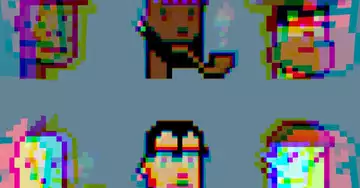NFTs stand for non-fungible tokens; they are not interchangeable, unlike fungible cryptocurrencies such as Bitcoin (BTC), where a Bitcoin is always a Bitcoin.
But is there a way to "fung" NFTs? Well, indirectly, yes! Fractional NFTs represent common ownership of NFTs, and it is possible to split an NFT into millions of fungible tokens by locking them in the vaults of decentralized platforms.
Asset splitting is common in traditional finance for high-value assets such as vacation homes, airplanes, and luxury cars. In this way, an investor can expose his portfolio to an expensive asset without having to own it outright. In other words, by fractionating an asset, the risks and costs associated with investing in that asset are also fractionated. The same logic applies to fractionalizing NFTs.
Some NFTs are known as blue chips, as the most expensive collections such as the Bored Ape Yacht Club, the CryptoPunks, and the Moonbirds sell for hundreds of thousands of dollars or even millions. Fractionalization lowers the cost of entry for investors, for whom these blue-chip assets are typically too expensive.
Fractionalization of NFTs creates fungible tokens, which in the case of the Ethereum blockchain means ERC-20 tokens tied to underlying NFTs (ERC-721 tokens). However, the price is not necessarily linked to these NFTs: investors and traders can trade them at a discount or a premium to the original valuation.
What are fractional NFTs?
A fractional NFT refers to a set of fungible tokens tied to a whole (e.g., a Bored Ape Yacht Club NFT) or a set of NFTs (e.g., multiple CryptoPunk NFTs). As the name implies, this is fractionalized - or proportionally shared - ownership of an NFT.
When an NFT is fractionalized, the original NFT is locked in a vault, and someone issues a limited supply of fungible tokens representing ownership of that NFT. These fungible tokens can be purchased on fractional NFT platforms such as fractional.art and can also be traded on secondary markets such as Uniswap.
Some NFT projects also issue fungible tokens, such as the APE token from Yuga Labs, the creators of Bored Ape Yacht Club. These tokens do not represent fractional ownership of the collection. Instead, they provide a benefit to some of Yuga Labs' projects, such as the recent Metaverse land sale where the token was used to pay for NFTs.
What is the relationship between fractionation of NFTs and valuation?
Fractionation brings more liquidity to a notoriously illiquid market because expensive NFTs can be traded in small portions. NFT holders can sell a portion of their NFT for crypto while retaining majority ownership. For investors, partial NFTs offer the opportunity to take a stake in an asset without having to buy the whole thing.
But the traded portion-represented by fungible tokens-can also cause the valuation of an NFT to rise or fall, as was the case with the Doge Meme NFT.
In June 2021, PleasrDAO bought the doge NFT for 1,696 ether (about $4 million at the time). And in September 2021, the decentralized autonomous organization fractionated the NFT into $DOG tokens and then auctioned 20% of them. The high demand brought the valuation of the NFT to $225 million.
There is no mechanism to prevent a fractional NFT from deviating from the price of the underlying asset, and therefore investors should think carefully before entering into a trade.
What are fractional NFT platforms?
There are not many tools and platforms to choose from, but a few stand out and can meet the needs of the currently maturing NFT market.
Unic.ly is one popular platform. To fractionalize an NFT on Unic.ly, NFT holders simply need to connect their wallets to create a fungible uToken - an ERC-20 token that represents ownership of a single NFT or a collection of NFTs. Users can trade these tokens or bid on the fractional asset through the platform.
The platform provides guaranteed liquidity through liquidity pools, where investors can provide liquidity and also deploy tokens to generate returns, similar to how liquidity pools and yield farming work in decentralized finance (DeFi).
Fractional.art is another popular platform. It is similar to Uni.cly in that it allows NFT holders to fractionalize their assets and redeem ETH in return. Although there are no bidding and deployment options like Uni.cly, the platform offers more flexibility for developers through a simple and permission-free protocol design. Anyone who wants to build on the fractional protocol can do so, while Uni.cly's more complex smart contracts are more of a limitation for developers.
NFTX is another platform for fractionalization, but it is quite different from Uni.cly and Fractional. It allows the pooling of NFTs with the same value - for example, NFTs with similar rarity at the minimum price - into index funds. NFT holders receive ERC-20 tokens when they add an NFT to an index or buy a portion of the index. Users receive a vToken that represents a 1:1 redemption claim to an NFT in the index to which the user's NFT was added. This means that users will not necessarily receive the NFT they deposited, as all deposited NFTs are considered equal. After the recent criticism, NFTX introduced the option to pay a 5% premium on the token price and let the user choose the NFT they want from the index.
Other ways to expose your investment portfolio to NFTs include the Index Co-Op's The JPG NFT Index (JPG), which tracks a broad NFT basket that includes fractional NFTs like $DOG, but also other assets relevant to the NFT market.

